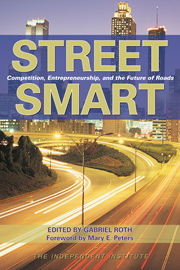When Congress returns to Washington after New Year, its unfinished business will include a proposed new highway bill, which threatens to jettison a long-standing financing principle—user pays—for a politically more-expedient principle: taxpayer pays.
The old funding principle has served the country well. For example, when Congress established the Highway Trust Fund in 1956 to finance the Interstate Highway System it insisted that only monies paid into the fund by road users could be appropriated to meet its objectives.
The new principle, on the other hand, is what has brought the United States to the brink of insolvency: Spend what you want and if the usual funding sources aren’t sufficient—in this case the fuel taxes that replenish the trust fund—dip into general revenues to make up the difference.
This would allow Congress to spend freely on transportation without having to vote for tax increases to provide the required revenues.
Besides the budget considerations, the move from “user pays” to “taxpayer pays” would have another significant consequence: It would further politicize highway spending, making decisions more dependent on political preferences than consumer choice.
The current highway bill, known formally as the Safe, Accountable, Flexible, Efficient Transportation Equity Act, was passed in August 2005. The law authorized federal surface transportation programs for highways, highway safety and mass transit for 2005–2009. It has been extended eight times since then, with the current extension due to expire next March 31. With an election ahead, and the House and Senate in disagreement over how to proceed, another extension is likely.
The Senate Environment and Public Works Committee has approved a new bill, authorizing some $109 billion in spending in fiscal years 2013 and 2014. The House Transportation Committee’s bill would authorize some $230 billion to $285 billion over six years. In both cases expected fuel tax revenues would not cover the full cost; general tax revenues would make up the difference.
While other differences may remain, there is a solution to the funding dilemma: Congress could get out of transportation financing altogether, wind down the Highway Trust Fund, and leave highway financing and decision-making to states, local authorities and private entities.
This would have several benefits.
First, it would encourage the more efficient use of transportation dollars. Today, states typically regard federal money as “free” and often embark on projects, such as the proposed California High-Speed Rail system, they would never consider financing on their own. State financing, which has to pass muster with local voters, would likely eliminate low-benefit projects. It would also avoid additional costs resulting from federal mandates and regulations.
Second, it would help reduce Washington’s financial burden. Highways and big-city transit systems should not be federal priorities. They can and should be financed out of fares, fees, tolls, and dedicated state fuel taxes that users pay.
Third, it would offer political benefits, relieving Washington of the odium of having to increase charges. This would benefit the millions of American road users—who vote. According to House Transportation & Infrastructure Committee Chairman John Mica, R-Fla., 35 percent of revenues paid by road users are now spent on non-road projects. Giving the states responsibility would help put the money back where it belongs.
Under this arrangement, transit users and providers would lose their federal subsidies. Mass transit, which comprises less than 2 percent of U.S. urban travel-miles, currently receives 20 percent of federal surface transportation funding. But transit projects should be funded locally, not by Washington. Why should farmers in Ohio finance mass transit services in Chicago?
The 1956 legislation establishing the federal Highway Trust Fund provided for this financing to be phased out within three years of the highway system’s completion. The system was completed in the 1990s.
Restoring highway financing to the states would not only resolve Congress’s dilemma, it would improve transportation decision-making, better align funding and demand, and meet the objectives of the original legislation.
Food, water, electricity and telecommunications are all paid for directly by customers; we can pay for highways and other transportation infrastructure the same way.








